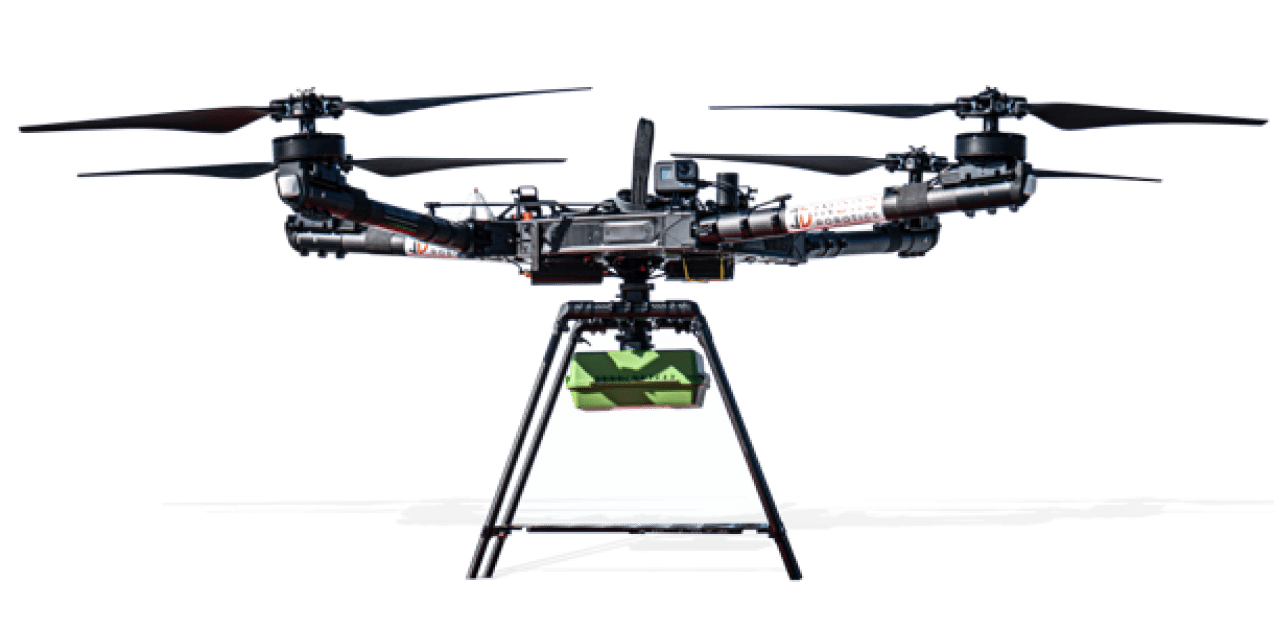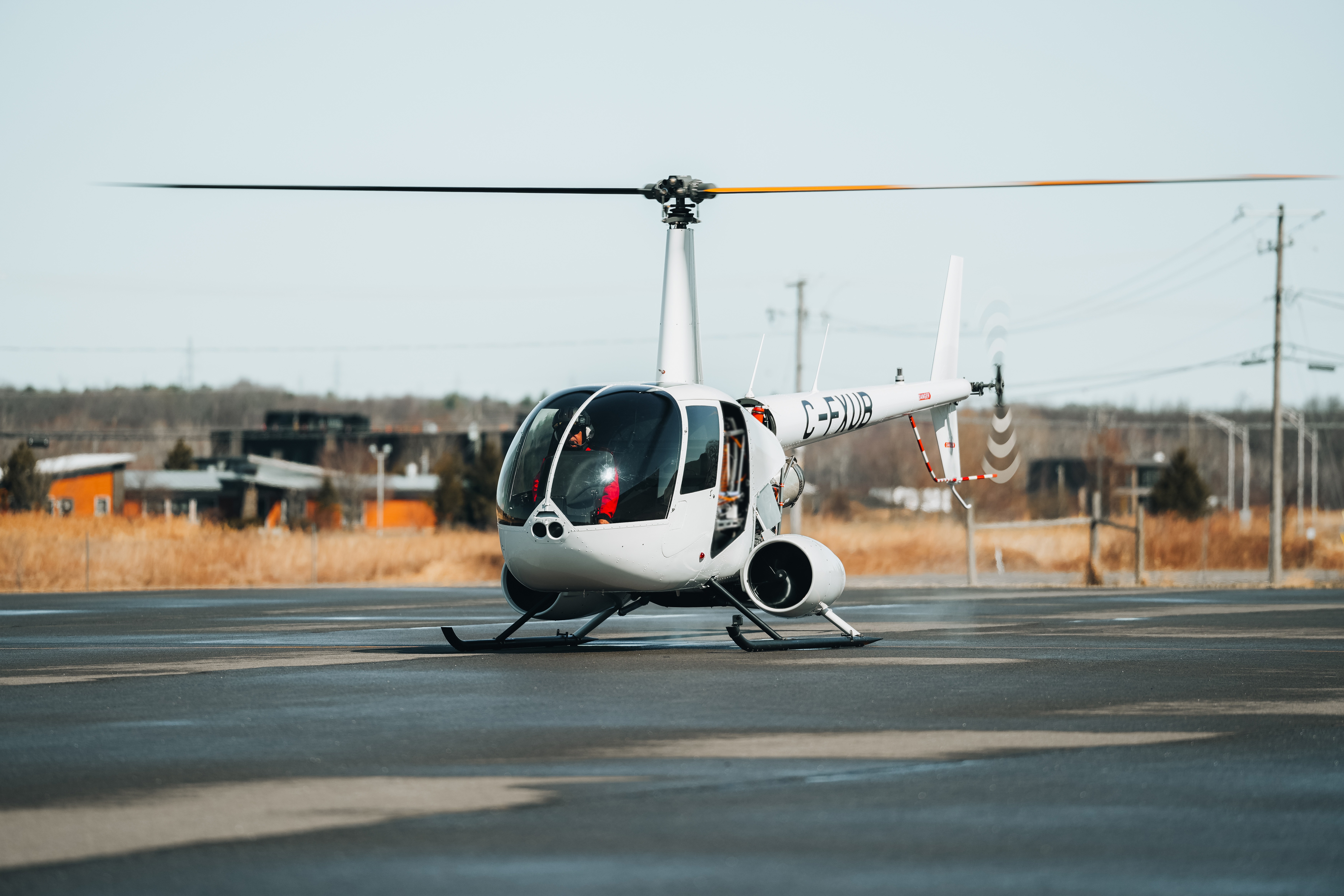When will AAM be here?
Many types of AAM aircraft will take to the air this decade.
Your first time receiving a package or taking a trip in Canada using one of these aircraft may be 2025. It could take longer or shorter, depending on how well we work together to tackle key challenges.

Development Stages
Many types of AAM aircraft are developing at different stages to help move the industry forward together safely.

Now - 2025
InDro Wayfinder
InDro Robotics received Canada's first commercial license to operate RPAS for moving cargo in 2020. Now, our regulators NAV Canada and Transport Canada are working together with RPAS operators to safely plan each trip as this industry grows.
2025 - 2030
Regional air mobility
Harbour Air’s float plane was retrofitted with an electric motor and flew in 2019. They’re aiming to serve their first commercial passenger in 2023. Today, many existing short range aircraft are being retrofitted with zero emission power systems, with more brand new aircraft being certified to fly shortly after.
2025 - 2035
Urban air mobility
After trying to retrofit cars in 1917, helicopters were used for urban air mobility beginning in the 1950’s but lacked in their safety, noise and cost to be useful for most city residents. Today’s builders of modern flying cars like Joby Aviation are working hard on every part of the systems needed to ensure they are safer, quieter, cheaper and run with zero emissions.
2035 +
Intercontinental air mobility
Long range flights have been used regularly to move people and goods around the world fast for nearly a century, but they’ve done so by burning fossil fuels. Today plans are in place by companies like Airbus to develop aircraft capable of flying hundreds of people across thousands of kilometers with zero emissions.

Key challenges driving AAM
Innovation
-
Hydrogen, electric, or both?
Energy sources are being considered by the type of trips the aircraft will fly, though many questions remain in making these systems work at scale. Hybrid systems using traditional fuels are being tested first to ensure safety. Battery electric and hydrogen fuel cells are being considered for shorter trips, and liquid hydrogen systems are being considered for longer trips.
-
How will traffic be managed safely in the sky?
More types of aircraft entering the skies this decade will make it more difficult for human air traffic controllers to ensure safety at all times. Air traffic controllers are collaborating with aircraft builders and operators to understand how airspace management needs to change to continue to maintain aircraft safely for everyone, though every nation is taking different approaches.
-
How can we ensure all of these new aircraft will fly safely?
Today, building hundreds of aircraft to the same level of safety and ensuring they maintain that level of safety through its entire life is an immense challenge that has been tackled well by the industry to date. New companies with new, smaller aircraft say they intend to manufacture these aircraft in the thousands, yet plenty of discussion remains as to how these aircraft will all be certified to get off the ground safely this decade.
Adoption
-
Who will be the first to use AAM?
Many people worry that future aircraft may only serve the upper classes. CAAM feels strongly that the first uses should be places where the advantage of flying serves a strong societal benefit, such as in emergency and medical situations. Discussions are ongoing as to who and how these new aircraft will benefit our communities.
-
Will these new aircraft be quieter even if there are more flights?
Every part of this new industry is being designed with noise in mind, but no one can say for sure how it will impact the communities these new aircraft will serve. Our national regulator, Transport Canada, is paying close attention to the benefits and concerns of people who may benefit or be impacted by these services as they discuss how they choose to consider the rules for allowing them into their communities.
-
How will pilots transition to no pilots on board?
Aviation has a long history of ensuring safety, and they are taking the transition to autonomy of aircraft in the sky very seriously. Using a staged approach, many authorities are seeing the first step as having very experienced pilots operate smaller aircraft from the ground in limited test situations. Increasingly larger aircraft will be tested in increasingly complex airspace until someday, you may be flying on an aircraft without a pilot on board.
Regulation
-
Who makes the rules for flying in Canada?
Transport Canada is a government organization that sets the rules and regulations to ensure the safety of the skies. NAV CANADA is a privately held non-for-profit responsible for managing the airspace safely based on the rules set by Transport Canada. These two groups work closely together to maintain some of the safest airspace in the world, and adapt to the changes that are coming for aviation.
-
How will these new aircraft be certified to fly?
New aircraft go through heavy testing before they can take off, and even more testing before they can be used by a business. While there are many steps, at the most basic level an aircraft must prove that it can safely fly(known as an “Airworthiness Certificate”) and when builders are ready to make many of these aircraft, they must prove that every aircraft built also meets these standards (known as a “Manufacturer's Certificate”). There are many steps between and after, Discussion is ongoing whether any changes are needed for these new types of aircraft to ensure the safety of everyone.
-
What will the rules for flying in cities be and who will make these rules?
Today, aviation is managed at the national level with groups such as Transport Canada and NAV Canada. With these new aircraft being able to serve new places including within and around cities, local governments are beginning to engage in the conversation around how and where these aircraft should be used to maximize value for their communities while minimizing impacts.
News, Insights & Resources

This industry is changing fast
Never miss out on the latest news and updates, sign up for Canada's AAM newsletter - The Pulse.
Stay updated

